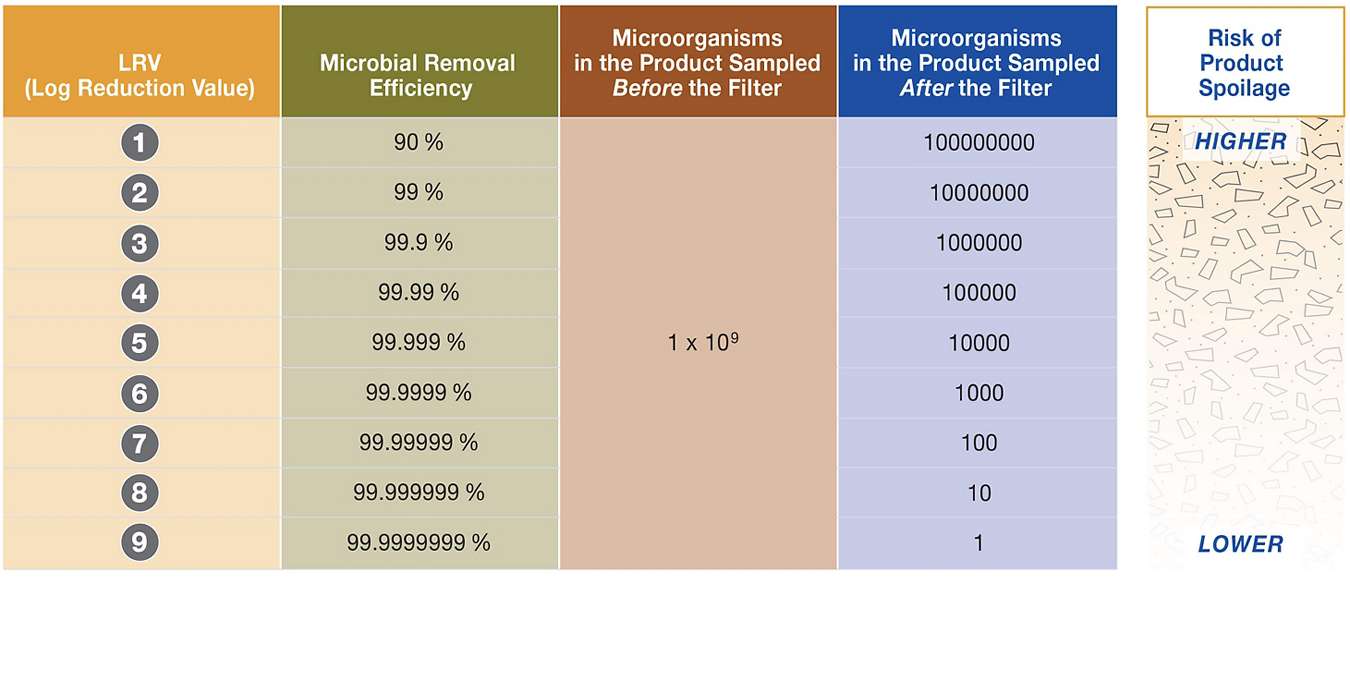Filtros para filtração final do vinho
O objetivo da filtração final é garantir a remoção dos organismos de deterioração do vinho que podem causar a refermentação, sabores estranhos ou turbidez depois do engarrafamento. Organismos de deterioração de vinho típicos incluem leveduras, bactérias lácteas e bactérias acéticas.
Uma vez que filtros finais do vinho são a última etapa da filtração antes do engarrafamento, eles são a etapa de filtração mais crítica e ajudarão, em última instância, a proteger a marca.
Os filtros finais do vinho frequentemente são descritos por seus tamanhos de poros, 0,45 µm ou 0,65 µm. Uma vez que o tamanho do poro não indica a redução de microrganismos, um filtro final do vinho deve ser validado para sua redução de bactérias e levedura de acordo com os microrganismos específicos do vinho.
O termo usado para descrever essa retenção é LRV (Log Reduction Value). A diferença entre os valores de retenção de log é mostrada na tabela abaixo.
Os filtros finais do vinho também devem ser testados quanto à integridade. O teste de integridade como teste não destrutivo está vinculado ao desempenho do filtro e, como tal, garante que o filtro esteja funcionando conforme o esperado na aplicação.
Registro do valor de redução em comparação ao Risco de contaminação
Preparado para saber mais? Podemos ajudar a encontrar a solução de filtração de vinho certa para suas necessidades. Entre em contato.
